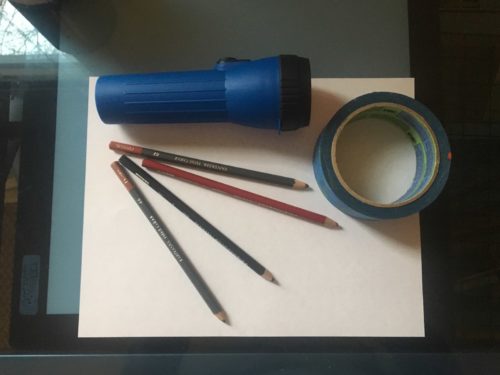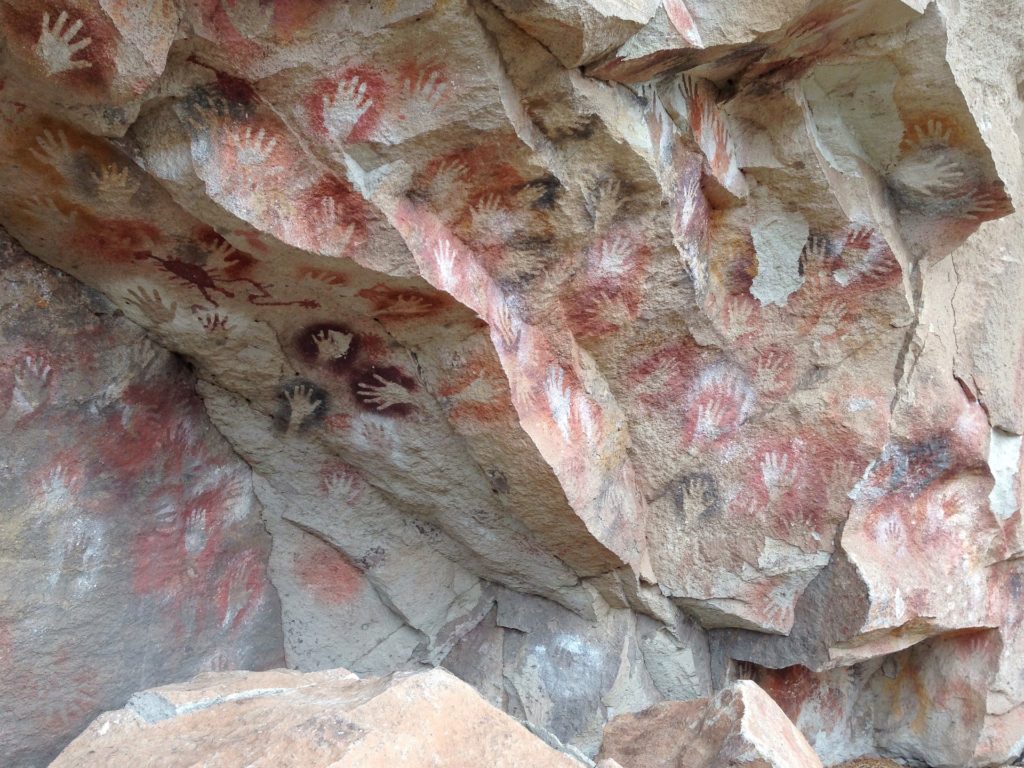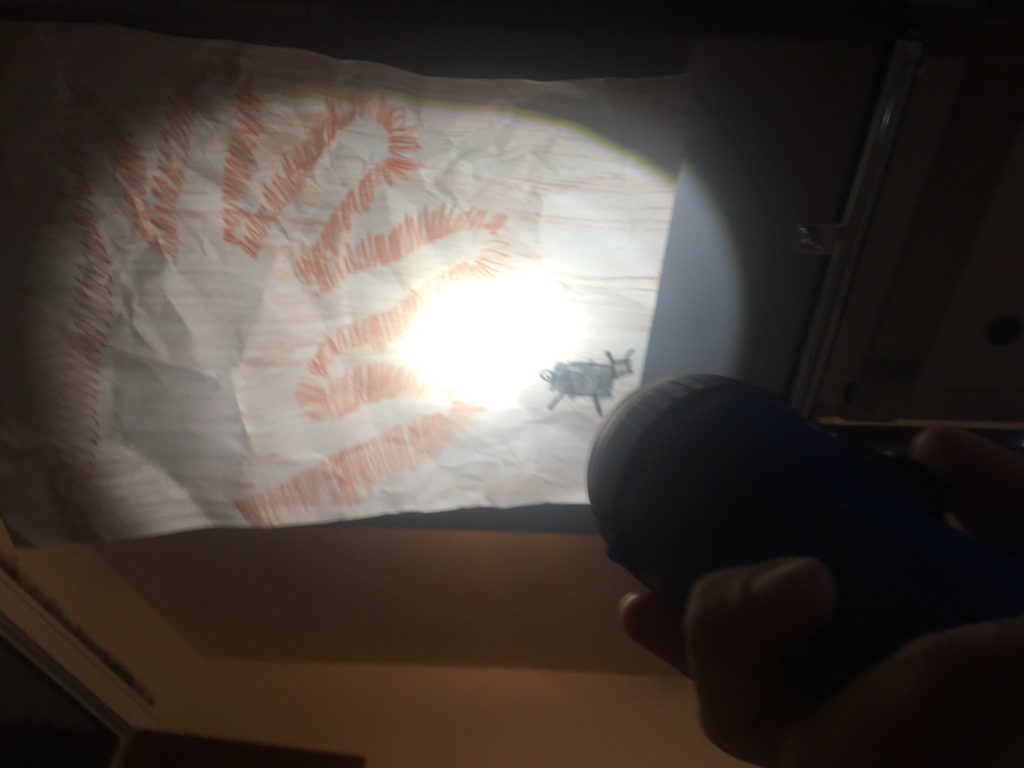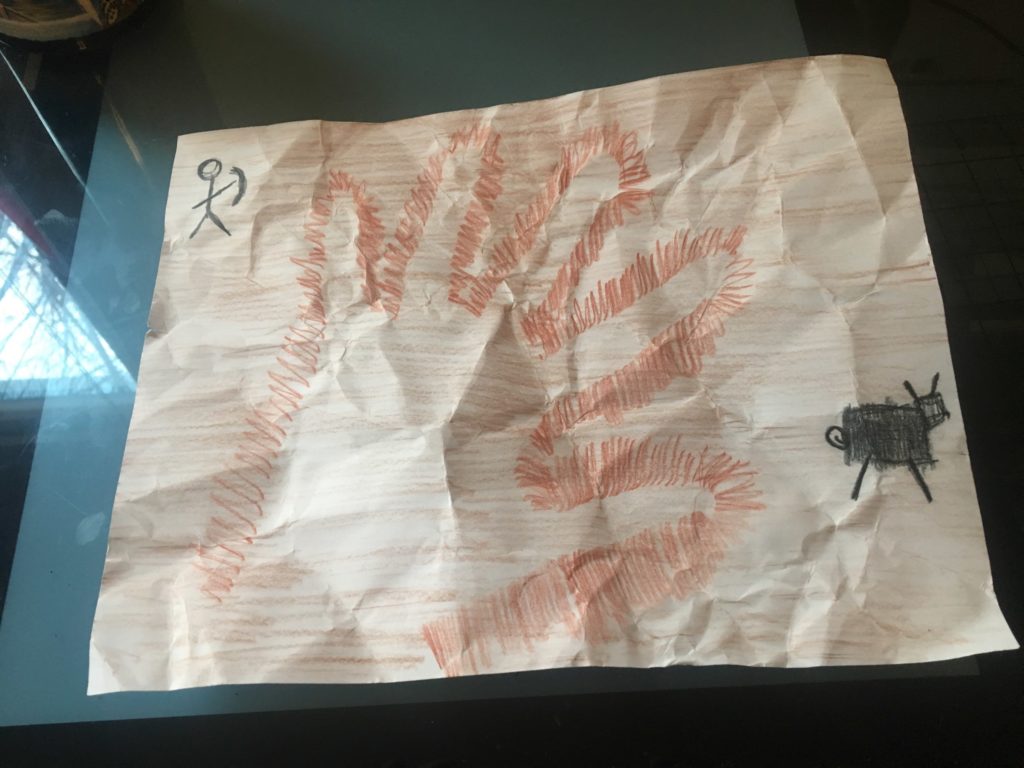Written by: Dan Walsh
STEM Educator
Supplies ideas:
Construction paper, painters tape, crayons, flashlight

Length:
5 to 10 minutes
Academic Subjects:
Art History
Directions for Cave Paintings:
April 16th is National High Five Day! We are going to practice social distancing but still celebrate the day by learning about cave paintings! Cave Paintings are a prehistoric art. Some of the paintings are older than 30,000 years! The paintings cover walls that early people might have lived in. The paintings range from all sorts of themes. Some paintings include animals, hand prints, and even stick figures. Some of the animals include a 30,000 year old pig painting from Indonesia. There’s Buffalo herd paintings in Spain. A few caves have featured hand prints. When scientists studied the hand prints they noticed one amazing detail. Some of the hand prints were small, which meant they were done by children. Another amazing thing scientists discovered was the small hand prints were done at least six feet in the air, which meant the children had to be lifted by their grownups in order to paint that high in the cave.
1.) Start by crumpling up your piece of paper. Ripping the paper slightly adds a prehistoric effect. If you have brown construction paper and black crayons, that’s perfect. Good old fashion computer paper and crayons will also work.
2.) Look at the following for inspiration, (Insert two stock photo images – Bison and Hands)
3.) Decide on a safe place to color. Make students know not to color the walls. (Magic erasers will work in a pinch) Since the paintings are found on walls, consider taping your paper to the bottom of a table. The student can work on their drawing by laying underneath the table and drawing upwards. Or have students draw at the table like normal, then tape to the wall afterwards.
4.) Students can trace the outline of their hand by stretching their fingers out on the page and coloring the outline.
5.) Once done, students can tape their paintings to the walls. The next part can be a lot of fun. Turn off the lights, draw the shades, and leave the room. Grab a flashlight and pretend to be archaeologists discovering the cave paintings for the first time.
6.) Slowly enter the room and shine the flashlights on the drawings. Help make students make observations by asking; what did these paintings mean? What sort of animals do you think these are? How old do you think these paintings are?
Vocabulary:
Archaeologist– Scientists that study human made objects, buildings, and even cave paintings! When they find artifacts that ask questions like how old is this, who made this, and why did they make this object.
Artifact– A human made object that scientists study.




